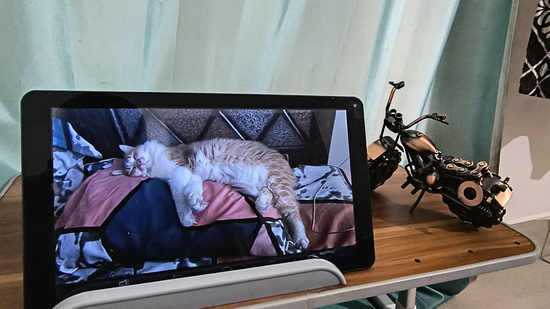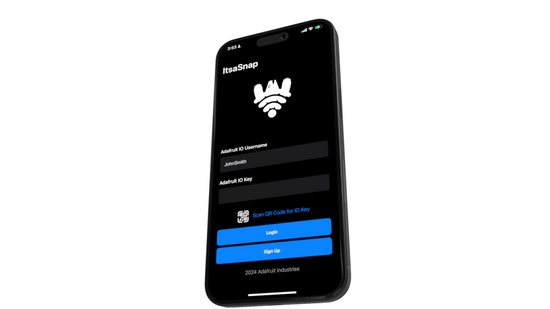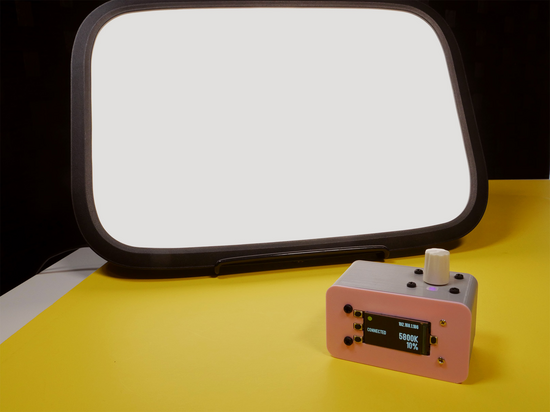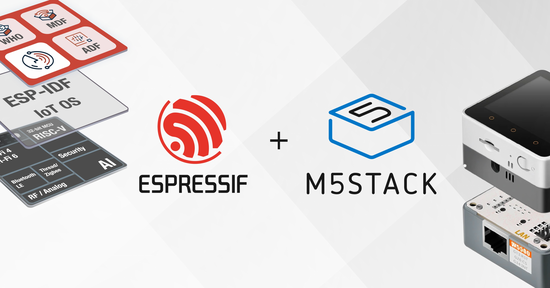-
Adafruit IoT Monthly: (Google) Photo Frame, Matter Standard, and more!
IoT Projects
Removing an IoT Fan from its Cloud

We’re seeing more and more of these types of projects where a user wants to “free” a commercially available smart device from its proprietary network. This writeup, posted by GitHub user Ouaibe, outlines their process of reverse engineering a Dreo “Smart Fan” to free it from its commercial servers. - GitHub
Water Tank Level With Node-RED Dashboard and InfluxDB on Synology NAS

MichaelH3777 needed a way to check the level of their underground water tank to manage water usage. A Raspberry Pi monitors the water level using a submersed 4-20ma sensor and sends MQTT messages over WiFi to Node-RED which is running on a Synology NAS. - Adafruit Blog
Turning a 10-year-old tablet into a digital photo frame for Google Photos

Last weekend, Pankaj Tanwar built a digital photo frame, from a decade-old tablet. It cycles through photos from a shared Google Photos album, switching up the display every hour. - Pankaj Tanwar’s Blog
IoT News and More!
Adafruit is Moving to Brooklyn!

That’s right folks – we’re heading to Brooklyn! Orders will take approximately 7-10 business days to ship while we get our factory set up in Industry City. Please note, delivery estimates provided at checkout are not delivery guarantees. The Adafruit team thanks our customers and community for all their orders and patience. - Adafruit Blog
Is Matter The One Smart Home Standard to Rule Them All?

Ovyl’s Michael Eatherly writes about the Matter smart home standard. - ovyl.io
5 ways IoT Consumer Devices Are Disappointing Users
Survey results from Memfault found the five ways consumer IoT devices are disappointing users are: Slow or bad connectivity issues, lost connectivity issues, battery charge issues, lack of trust in the parent company, and bad user interfaces (mobile, web, and/or embedded). globalspec
-
Adafruit IoT Monthly: FPV Lawnmower, Solar Storms, and more!
IoT Projects
Phone-controlled Lawnmower with Video Streaming

Ievgenii Tkachenko’s DIY lawnmower project, Lawny, “invites you to picture yourself relaxing in a cozy chair, enjoying a racing simulator, and effortlessly mowing your lawn”. - Hackster.io
Tomato plant talks to you using Raspberry Pi and AI.

Audrey III is an interactive gardening experience. Instead of a traditional IoT dashboard for viewing the plant’s sensor data, Audrey III assists in growing a tomato plant through conversational AI. It can tell you its nutrient levels and when the last time its been watered - TomsHardware
Controlling the Taylor Swift Eras Tour wristbands with Flipper Zero

John Graham breaks down the process of interfacing with a free LED wristband from Taylor Swift’s ongoing “Eras Tour” concerts. - jgc.org
IoT News and More!
It’s A Snap by Adafruit

It’s a Snap (ItsaSnap) is a new iOS app designed for exploring Adafruit IO. It allows you to send data to your Adafruit IO feeds. You can also link it to control or monitor your internet-connected projects. This lets you control and check Adafruit devices from your phone, anywhere. - Adafruit Learning System
Solar Storms Break Millions of Smart Devices

The May 2024 solar storm’s impacts were felt by millions of IoT devices. Memfault dives into their databases to find out how many of their monitored devices were impacted. - Memfault Blog
IoT technology will save eight times the energy it consumes by 2030

A new study from Transforma Insights found that IoT devices that monitor industrial facilities will save more than eight times the energy than they consume. This would save 230 billion cubic meters of water and eliminating one gigaton of CO2 emissions. - IoTTechNews
-
Adafruit IoT Monthly: Powering sensors through soil, talking dogs, and more!
IoT Projects
Solar Power Gauge

When Ben and his wife got solar this past winter, they wanted to know how much power they generated (especially as they moved closer to the equinox). This meter was built as an experiment to measure the power output of their home’s solar system. - HackADay.io
Stuff My Dog Said

This fun project is a web-based dashboard that displays the latest messages from a dog. A dog. The dog presses their paw down on a specific button on a floor mat to use it. The mat translates the button press into a specific phrase, uses a speaker to “say” the phrase, and publishes the phrase to a web dashboard on Adafruit.IO - Adafruit Playground
An Internet-Enabled 3D Printer Filament Sensor

This 3D printer sensor can detect (and notify you) when the filament is about to run out by measuring the diameter of the filament. - HackADay.com
E-Ink Status Dashboard for a Car

A wood-enclosed e-ink dashboard for a car that displays the current mileage, battery level, gas level and inside temperature. - HackADay.com
Post-Apocalyptic Home Automation Terminal

This Raspberry Pi 400-based post-apocalyptic terminal to run a home automation system looks like a prop from the Fallout TV show. The case around the Raspberry Pi 400 was specifically crafted to look like it came from a post-apocalyptic world. - HackADay.com
IoT News and More!
Agricultural IoT System Sends Power Through the Soil

Tennessee Tech is developing a way to power sensors in a field by transmitting electric power through the soil. - IEEE Spectrum
Raspberry Pi Connect

Raspberry Pi announced Raspberry Pi Connect, a tool to access a Pi using only a web browser. - Raspberry Pi
Insights: IoT market to More than Double in 10 Years

A study by Transforma Insights found the “number of active IoT devices will more than double to 40 billion by the end of 2033”. While this is not a “hockey stick growth” trend, it’s steady. - RCRWireless
Desk of Ladyada – Desk plant health monitoring with SproutSense and Adafruit.io

On this episode of Desk of Ladyada, we’re getting green and experimenting with soil moisture sensing on a prototype we’re testing out called SproutSense. Right now we’re trying to figure out: why does the capacitance slooowly rise over the course of days, and how can we detect when the soil has dried out using some sort of logic/hysteresis since the depth of the sensor can affect the absolute value. We also talk about sending serial output data to Adafruit IO for monitoring. - Adafruit Blog
-
WipperSnapper Firmware Installer Updates - Beta 82

A warm hello from the Adafruit IO team!
Today we’re excited to announce the improvements to the Adafruit IO firmware installer that makes it easier than ever to get started on IO with a WipperSnapper-compatible device.
🏠 Web-based ESPTool for Native USB boards
As we add more and more sensor drivers to WipperSnapper the available flash space keeps getting lower. A few boards were even running out, leading us to need to migrate partition schemes and shrink the user file systems (where secrets are stored).
Where’s the problem there you ask? For now, the TinyUSB bootloader doesn’t support changing the partition layout by uploading a UF2. We didn’t want to force users to use Arduino, that would defeat the point of WipperSnapper’s ease of use! Instead, we have migrated these boards to use the Adafruit.io web-installer for installing and upgrading firmware.
Currently the FunHouse board is the only UF2 board (with native USB support) using the new steps, but while we were at it we also updated the Feather ESP32 v1 (Huzzah32), and Qt Py ESP32-C3 to have new partition offsets too. The steps have new instructions to help put your board into bootloader mode if necessary, and the FunHouse even has a nice instructional GIF animation.
📃 Usage
To use the web installer version of esptool your browser needs to support Web-Serial (allowing it to connect to serial ports and speak to the board). This requires a chrome based browser, like Chromium, Google Chrome, or Microsoft Edge. If you can’t use the web serial method of the installer, don’t panic, we have a downloadable bin file that you can manually flash to the board using your computer and the offline official esptool.
🆕 WipperSnapper Firmware Release - Beta 82
In tandem with the IO web installer changes, we’ve released Beta 82!
Along with the changes to the aforementioned boards there are a few reliability improvements, including repeating the error message on the serial port when your board has a fatal error, and now printing any MQTT connection error reasons to help better diagnose any issues.
Lastly there are a couple of new components added, both Time-of-Flight (ToF) sensors with very high accuracy:
- VL53L1X: This is the ‘next generation’ of the VL53L0X ToF sensor and can handle about ~30 to 4000mm of range distance, with up to 50Hz update rate.
- VL53L4CD: This is another ‘big sister’ of the VL6180X ToF sensor and can handle about ~1 to 1300mm
Since both use a very narrow light source, they are good for determining distance of only the surface directly in front of it. Unlike sonars that bounce ultrasonic waves, the ‘cone’ of sensing is very narrow. Unlike IR distance sensors that try to measure the amount of light bounced, the VL53 is much more precise and doesn’t have linearity problems or ‘double imaging’ where you can’t tell if an object is very far or very close.
As always, if you have any suggestions or bugs to report about these new features, please let us know in the forums.
-
Adafruit IoT Monthly: Rice Cooker Push Notifications, The Open Home Foundation, and more!
IoT Projects
PowerJeep: Upgrade your kid’s electric ride-on car

We love this project that can save a powerwheels electric ride-on car from the landfill and provide new functionality. The conversion replaces the old lead battery with an 18V Ryobi battery. It also replaces the electronics with an ESP32 programmed to remotely monitor and control the car’s speed. This project also contains a pretty small component list, with 6-7 total products to purchase. - HackADay
Receive push notifications from your rice cooker

Edent’s project for monitoring their reasonably priced rice cooker is simple - get an energy-monitoring smart plug and use it to send notifications to your phone when the rice cooker is done. - HackADay
DeskOps: Commanding My Desk with HTTP

Kevin Norman automated their standing desk to configure a schedule for when he’s standing up and working vs when he’s sitting down and working. The updated electronics system moves the desk up and down based on HTTP requests. - Kevin Norman’s Blog
PicoDVI Adafruit IO Feed Dashboard

This is a great way to display sensor data on any HDMI TV, especially for workshops or educational office spaces! You can display sensor data on any DVI or HDMI display with the Raspberry Pi Pico W and Adafruit’s Pi CowBell DVI Output. - Adafruit Learning System
IoT Battery Monitor

Recharge batteries and get an email when it’s done charging. The project uses a Feather ESP32-S2 Reverse TFT to monitor and display the battery voltage. It sends voltage data to Adafruit IO, allowing one to receive an SMS text or email when the battery is fully charged. - Adafruit Learning System
Elgato WiFi Light Controller

The Elgato series of lights has become really popular and use an app on your desktop or phone to control them. If you want manual control over your light’s brightness and color temperature, this project details how to build a physical device that can communicate with the lights over WiFi. - Adafruit Learning System
IoT News and More!
Espressif Acquires Majority Stake in M5Stack

Espressif Systems has announced its acquisition of a majority stake in M5Stack. M5Stack is known for its modular, stackable, hardware platform. The author of this newsletter hopes there’ll be collaboration between the two companies resulting in interesting and novel development kits for the latest Espressif chips. - Espressif News Blog
Announcing The Open Home Foundation

The Open Home Foundation is a collection of over 240 projects, standards, drivers, and libraries. Notably Home Assistant, ESPHome, Zigpy, Piper, Improv Wi-Fi, and Wyoming are part of this foundation. The goal is to work against “surveillance capitalism, the risk of a buyout, and open-source projects becoming abandonware”. - Open Home Foundation
Siemens and Microsoft standardize digital-twin languages

Siemens and Microsoft are collaborating to standardize the language used to describe physical objects, called Digital Twins. They’re working together on a specification that “will be compatible with the W3C’s emerging Thing Description standard”. - RCRWireless
NYC Environmental Justice Mapping Tool Shows Users Environmental Hazards and More

Spending any amount of time with this mapping tool from the Mayor’s Office of Climate & Environmental Justice is a bit overwhelming considering the sheer amount of data and what the data shows. - Adafruit Blog


